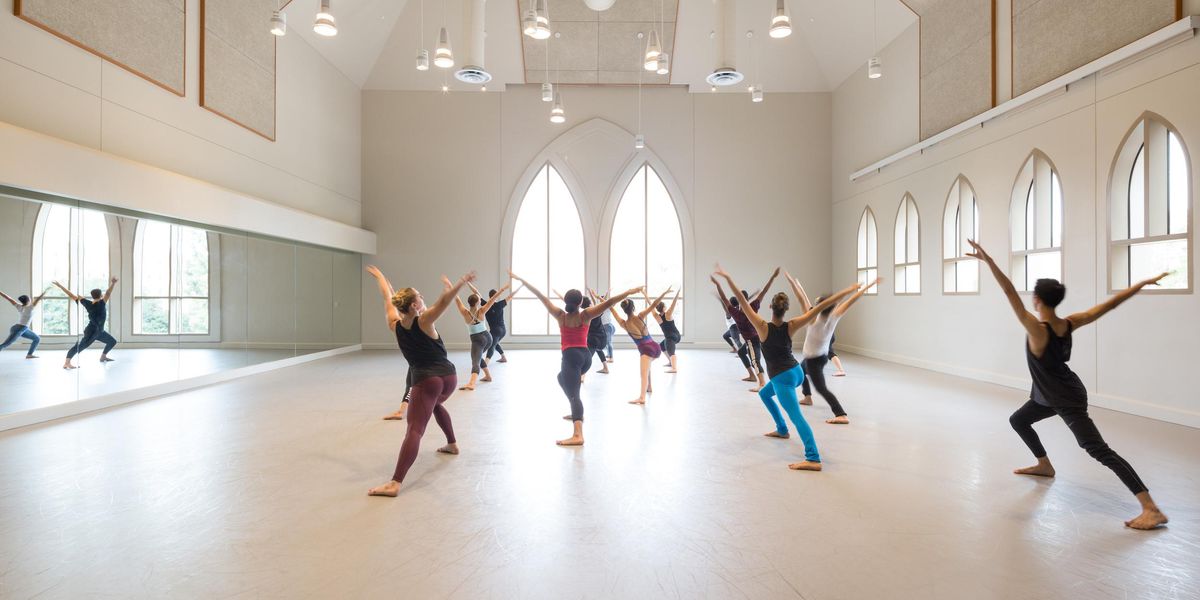Great Partnerships: Partnering Secrets for Guys
“You might as well be grabbing two bananas,” says Jock Soto to a male student during a partnering class at School of American Ballet. “You should use your thumb and two fingers,” he explains, demonstrating how he gently holds the wrists of a young woman as he promenades her 360 degrees in a perfectly balanced arabesque. The young man, who had been gripping her wrists with his clenched hands, nods and corrects his mistake.
Partnering is an art form within an art form. Soto, a former principal dancer with New York City Ballet known for his partnering, helps young dancers cultivate their skills in working as a dance team. Timing, sensitivity, strength, and a basic knowledge of the principles of physics all blend together to produce effective partnering. Some men possess the right instincts; some have to learn them step by step.
Lar Lubovitch gravitated to partnering early in his choreographic career (the upper body strength he developed from gymnastics training didn’t hurt). “The best partnerships are between people who have built up trust over a period of time,” he says. “I didn’t feel like a separate person from the woman or man I was partnering. That person becomes an extension of your own movement. It’s a design beyond your body.”
Soto witnessed that trust as a young dancer, watching Suzanne Farrell with Peter Martins, and Heather Watts with Bart Cook. Later on, Soto formed his own legendary team with Wendy Whelan, aided by the choreography of Christopher Wheeldon. “It’s challenging to make something ornate and complicated look effortless,” says Soto.
For Carlos Molina, a principal dancer with Boston Ballet known for his gallant partnering, communication with the ballerina is paramount. “I ask her, ‘What do you need? What do you feel? Do you think I am doing something wrong? Do I need to be in a different place? Do you think maybe this would work better for us?’ ” says Molina. “It’s important to talk to get in a position where you both feel comfortable.”
Most partnering requires a magician’s sleight of hand approach. “If you see the man behind the ballerina too much, that’s not good partnering,” says Soto. “You have to take care of your ballerina, showcase her, and then [later] you get your solo. Suzanne Farrell looked like a million dollars and she took dares. That’s what’s important.”
Soto stresses that economy of movement can cut the work in half. “I gradually found easier ways of doing things instead of ‘muscling’ it. You have to use your whole body instead of one part of it,” he says. (That means shoulders, back, and legs, guys). And feeling your partner’s balance comes with the job description. “You have to teach yourself where she’s going to be at all times,” adds Soto.
Postmodern choreographer Terry Creach says he began his career exploring “space sharing,” a compositional tool to explore how bodies can interact in a defined space. Partnering evolved from that, including gender role reversals and male/male partnering. “To be a good partner, you have to be willing to do that sharing. You have to accommodate a certain amount of changeability at every moment,” says Creach.
Alan Vincent, who dances the Swan in the currently touring production of Matthew Bourne’s Swan Lake, had extensive experience with partnering women in contemporary troupes. But the male duets in Bourne’s choreography provided a new perspective. “In traditional ballet partnering, you have to get the girl on her leg and lift her above your head,” says Vincent. “This production is very organic. I find it a lot easier to partner guys. They can hold your weight as well as you holding theirs.”
For those who are not naturally gifted at partnering, the route is the same as that to Carnegie Hall: practice, practice, practice. (For those lacking experience, Soto sometimes puts the male student in the ballerina’s role and partners him to let him feel the proper technique). Even then, partnering felonies are bound to crop up. For Lubovitch, it happens when two dancers clash over different approaches to musicality. To Soto, a man with feet planted at shoulder width, paddling his pirouetting ballerina’s waist like a roulette wheel, is unconscionable. “That drives me insane. I have to turn my head away,” says Soto. (In class Soto demonstrates how he smoothly assists the ballerina’s momentum only on her first and final turns.) “And if I see that a girl has red welts under her armpits, I have to question why he would grab her that hard.”
Final tips? One last word from Soto, the Zen master: “Go to the gym. Do your push-ups. Work on it and watch. Male dancers should watch partners partner.”




